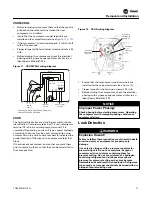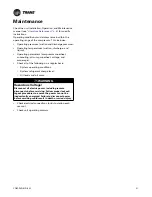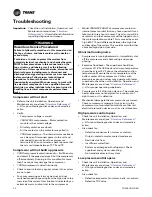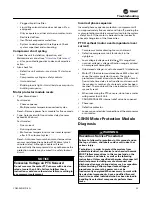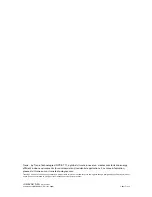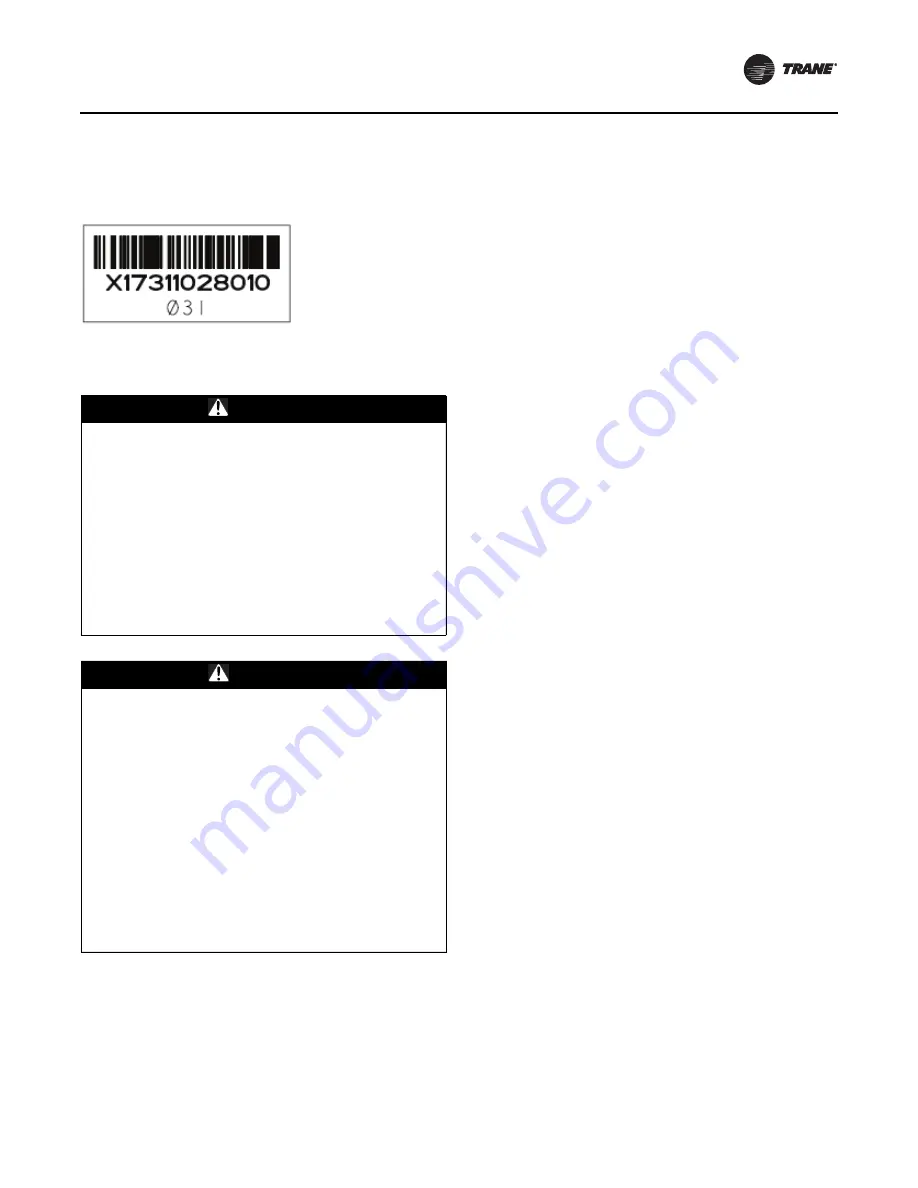
Removal and Installation
COM-SVN01D-EN
15
4. It will be necessary to use an oil catch pan under the oil
equalizer connection to catch the oil when the
connection is loosened and removed.
Figure 9.
Installation
WARNING
Hazardous Voltage w/Capacitors!
Failure to disconnect power and discharge capacitors
before servicing could result in death or serious injury.
Disconnect all electric power, including remote
disconnects and discharge all motor start/run
capacitors before servicing. Follow proper lockout/
tagout procedures to ensure the power cannot be
inadvertently energized. Verify with a CAT III or IV
voltmeter rated per NFPA 70E that all capacitors have
discharged.
For additional information regarding the safe discharge of
capacitors, see PROD-SVB06*-EN.
WARNING
Explosion Hazard and Deadly Gases!
Failure to follow all proper safe refrigerant handling
practices could result in death or serious injury.
Never solder, braze or weld on refrigerant lines or any
unit components that are above atmospheric pressure
or where refrigerant may be present. Always remove
refrigerant by following the guidelines established by
the EPA Federal Clean Air Act or other state or local
codes as appropriate. After refrigerant removal, use dry
nitrogen to bring system back to atmospheric pressure
before opening system for repairs. Mixtures of
refrigerants and air under pressure may become
combustible in the presence of an ignition source
leading to an explosion. Excessive heat from soldering,
brazing or welding with refrigerant vapors present can
form highly toxic gases and extremely corrosive acids.
•
Only qualified personnel should install or repair
refrigeration systems. If you are not qualified, seek the
services of qualified personnel.
•
Pressure tests must be performed by qualified
personnel.
•
The replacement compressor contains a nitrogen
charge of 5 psig.
•
Remove the suction plug before the discharge plug to
avoid oil spray while opening the compressor.
•
Keep exposure to the atmosphere at a minimum due to
POE oil. Remove the rubber plugs only when ready to
install the compressor. Plug other compressor on
tandem or trio compressors.
•
Before removing the oil equalizer connection cap
,
place a can pan under the rotolock fitting as the
compressor oil level is above the rotolock connection.
Oil must be added to the compressors after
installation.
a. Removal Instructions
Tip:
Before removing the existing tubing from the
compressor, apply flux to the joint. This will aid in
the flow of the braze material and help keep the
joint clean for rebrazing. After fluxing, heat the joint
evenly to slightly higher temperature than the
melting temperature of the filler material. At this
point, the two parts of the assembly should be
easily separated.
b. Installation
c. Preparation:
i. For proper capillary action to occur, the tube and
the fitting must be free of oil, grease, burrs, and
oxide contamination. To remove the oil and
grease a commercial solvent or denatured
alcohol can be used. The surface may be
properly cleaned by brushing with a stainless
shell brush or by a stiff rubbing with emery cloth.
Wipe the joint clean to remove small foreign
particles such as emery dust, by wiping the
surface with a clean cloth. Once the surfaces are
clean, be careful not to touch them as oil from
the skin will contaminate the surfaces.
ii. Pre-fit the existing tubing into the compressor to
check that it has full insertion into the
compressor fitting. For compressors that have a
suction restrictor located in the suction inlet,
ensure that the tube is inserted completely such
that the suction restrictor fits tightly against the
end of the compressor suction connection.
iii. Apply flux with a brush to the outside of the
compressor connecting tubing, taking care to
evenly apply the flux around the entire diameter.
Care must also be taken not to get the flux inside
of the tubing as this may result in contamination
of the refrigerant system.
iv. Reinsert the tube into the compressor
connection. If the tubing does not stay fully
inserted, it must be restrained to prevent it from
backing out of the compressor connection
during the brazing process.
d. Brazing Technique
i. If possible, use a double-side torch while
brazing.

















